Themed collection Sustainable catalytic conversions of renewable substrates

Sustainable catalytic conversions of renewable substrates
Recent advances in catalysis show how a multi-disciplinary approach helps break the barriers encountered during the conversion of lignocellulosic biomass into sustainable, value-added fuels and chemicals.
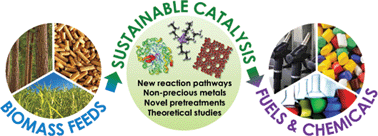
Catal. Sci. Technol., 2014,4, 2180-2181
https://doi.org/10.1039/C4CY90025A
A review of advanced catalyst development for Fischer–Tropsch synthesis of hydrocarbons from biomass derived syn-gas
This review summarizes recent developments in FT-catalyst design with regards to optimizing catalyst activity and selectivity towards synthetic fuels.
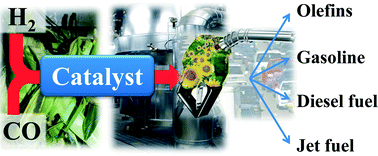
Catal. Sci. Technol., 2014,4, 2210-2229
https://doi.org/10.1039/C4CY00327F
Transition metal-catalyzed oxidative double bond cleavage of simple and bio-derived alkenes and unsaturated fatty acids
The oxidative cleavage of unsaturated fatty acids towards aldehydes or carboxylic acids is carried out industrially by ozonolysis. Catalytic alternatives include second- and third-row transition metal as well as more recent Fe systems.

Catal. Sci. Technol., 2014,4, 2182-2209
https://doi.org/10.1039/C3CY01095C
Catalytic hydrosilylation of oxalic acid: chemoselective formation of functionalized C2-products
Oxalic acid is an attractive entry to functionalized C2-products because it can be formed by C–C coupling of two CO2 molecules under electrocatalytic reduction. Herein, we describe the first attempts to reduce oxalic acid by catalytic hydrosilylation, using B(C6F5)3 as a Lewis acidic catalyst.
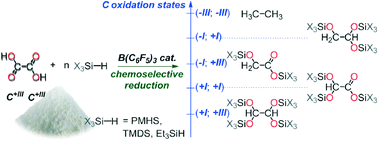
Catal. Sci. Technol., 2014,4, 2230-2234
https://doi.org/10.1039/C4CY00339J
Catalytic dehydration of fructose to HMF over sulfonic acid functionalized periodic mesoporous organosilicas: role of the acid density
Here, we report that the dispersion and environment of acid sites anchored on a periodic mesoporous organosilica play a crucial role in its catalytic activity in water.

Catal. Sci. Technol., 2014,4, 2235-2240
https://doi.org/10.1039/C4CY00137K
Transformations of polyols to organic acids and hydrogen in aqueous alkaline media
Carbon nanofiber supported Ni and Cu nano-particles are active for the anaerobic aqueous phase transformation of polyols into organic acids (glycolic acid and lactic acid) and hydrogen at low temperatures (140–180 °C).
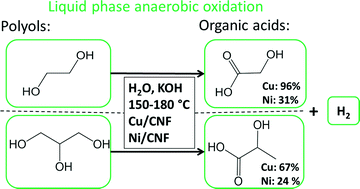
Catal. Sci. Technol., 2014,4, 2353-2366
https://doi.org/10.1039/C4CY00249K
Vapor phase hydrodeoxygenation of furfural to 2-methylfuran on molybdenum carbide catalysts
Vapor phase hydrodeoxygenation (HDO) of furfural over Mo2C catalysts at low temperatures (423 K) and ambient pressure showed high/low selectivity to C![[double bond, length as m-dash]](https://www.rsc.org/images/entities/char_e001.gif) O bond/C–C bond cleavage, resulting in selectivity to 2-methylfuran and furan of ~50–60% and <1%, respectively.
O bond/C–C bond cleavage, resulting in selectivity to 2-methylfuran and furan of ~50–60% and <1%, respectively.
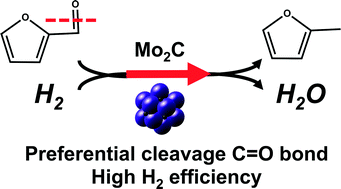
Catal. Sci. Technol., 2014,4, 2340-2352
https://doi.org/10.1039/C4CY00286E
Catalytic hydrotreatment of pyrolytic lignins to give alkylphenolics and aromatics using a supported Ru catalyst
The catalytic hydrotreatment of two pyrolytic lignins (pine and forestry residue), obtained from the corresponding fast pyrolysis oils, and organosolv Alcell lignin as a benchmark was explored in a batch set-up using Ru/C as the catalyst (400 °C, 4 h, 100 bar initial H2 pressure).

Catal. Sci. Technol., 2014,4, 2367-2377
https://doi.org/10.1039/C4CY00242C
Regioselective catalytic acetoxylation of limonene
Two efficient strategies for a direct catalytic and regioselective acetoxylation of terpenes are described.
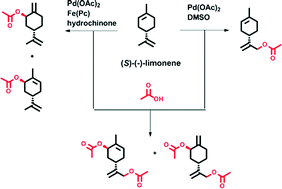
Catal. Sci. Technol., 2014,4, 2318-2325
https://doi.org/10.1039/C4CY00231H
Synergy between Lewis acid sites and hydroxyl groups for the isomerization of glucose to fructose over Sn-containing zeolites: a theoretical perspective
The cooperative action of Lewis acidic lattice Sn and hydrogen bond donor sites in zeolites is key for efficient glucose isomerization catalysis.
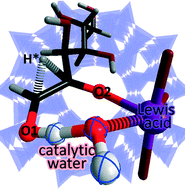
Catal. Sci. Technol., 2014,4, 2241-2250
https://doi.org/10.1039/C4CY00186A
An examination of the intrinsic activity and stability of various solid acids during the catalytic decarboxylation of γ-valerolactone
Rates of γ-valerolactone (GVL) decarboxylation were measured in the gas phase under anhydrous conditions from 523–723 K over a series of solid acids including amorphous silica alumina, MFI zeolites, supported phosphotungstic acid, and γ-Al2O3.
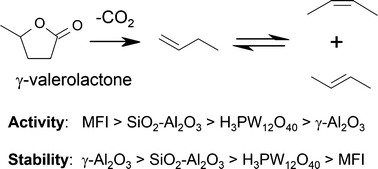
Catal. Sci. Technol., 2014,4, 2267-2279
https://doi.org/10.1039/C4CY00307A
Selective formation of α,ω-ester amides from the aminocarbonylation of castor oil derived methyl 10-undecenoate and other unsaturated substrates
Methyl 10-undecenoate from castor oil is aminocarbonylated to α,ω-amidoesters for possible use in polyamide or polyester amide monomer production.
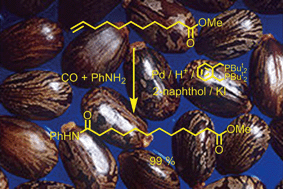
Catal. Sci. Technol., 2014,4, 2332-2339
https://doi.org/10.1039/C4CY00158C
Combined 1,4-butanediol lactonization and transfer hydrogenation/hydrogenolysis of furfural-derivatives under continuous flow conditions
Sequential butanediol lactonization and transfer hydrogenation/hydrogenolysis of furfural-derivatives offers new opportunities for reductive upgrading of biomass.
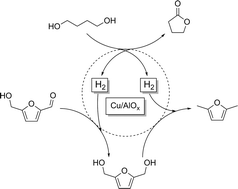
Catal. Sci. Technol., 2014,4, 2326-2331
https://doi.org/10.1039/C4CY00213J
Conversion of furfuryl alcohol into 2-methylfuran at room temperature using Pd/TiO2 catalyst
The selective hydrogenation of furfuryl alcohol into 2-methylfuran was investigated at room temperature using palladium supported catalysts.
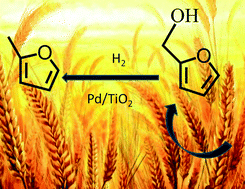
Catal. Sci. Technol., 2014,4, 2280-2286
https://doi.org/10.1039/C4CY00184B
Hierarchical Sn-MFI zeolites prepared by facile top-down methods for sugar isomerisation
Hierarchical tin-containing MFI zeolites prepared by alkaline treatment of hydrothermally synthesised Sn-MFI and alkaline-assisted stannation of silicalite-1 efficiently catalyse the aqueous-phase isomerisation of mono- and disaccharides.
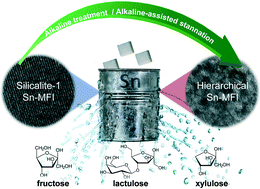
Catal. Sci. Technol., 2014,4, 2302-2311
https://doi.org/10.1039/C4CY00172A
Solvent-free conversion of glycerol to solketal catalysed by activated carbons functionalised with acid groups
Functionalised activated carbons are highly active catalysts for the synthesis of solketal from glycerol under mild and solvent-free conditions.
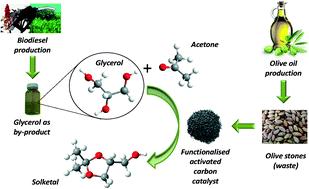
Catal. Sci. Technol., 2014,4, 2293-2301
https://doi.org/10.1039/C4CY00181H
Mesoporous Zr–SBA-16 catalysts for glycerol valorization processes: towards biorenewable formulations
Zr-containing SBA-16 materials were utilized in glycerol valorization for the production of esters (via reaction with levulinic acid) and glycerol formal (GF) via acetalisation with paraformaldehyde.
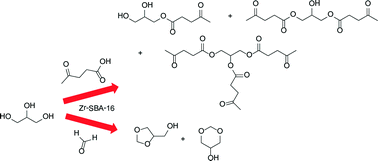
Catal. Sci. Technol., 2014,4, 2287-2292
https://doi.org/10.1039/C4CY00230J
On the selective acid-catalysed dehydration of 1,2,6-hexanetriol
Selectivity results for the dehydration of 1,2,6-hexanetriol over solid acid catalysts are reported.

Catal. Sci. Technol., 2014,4, 2260-2266
https://doi.org/10.1039/C4CY00174E
Quantitative evaluation of ball-milling effects on the hydrolysis of cellulose catalysed by activated carbon
Pre-treatment ball-milling of solid cellulose with a solid catalyst (mix-milling) selectively accelerates the hydrolysis of cellulose to soluble oligomers by 13 times.
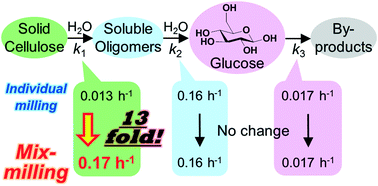
Catal. Sci. Technol., 2014,4, 2312-2317
https://doi.org/10.1039/C4CY00175C
Role of laccase as an enzymatic pretreatment method to improve lignocellulosic saccharification
The saccharification of wheat straw was improved when an incubation step was performed with Trametes versicolor laccase (TvL) and the mediator 1-hydroxybenzotriazole (1-HBT) prior to an alkaline peroxide extraction (APE).
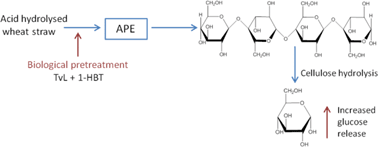
Catal. Sci. Technol., 2014,4, 2251-2259
https://doi.org/10.1039/C4CY00046C
About this collection
This exciting and timely issue contains contributions on a wide range of topics related to catalytic biomass conversion methods, including homogeneous, heterogeneous and enzymatic processes. The themed issue covers contributions concerned with the chemical or chemical engineering aspects of the selective catalytic conversion of renewable feedstocks, for instance lignocellulosic biomass or its (hemi)cellulose or lignin components, or with the catalytic conversion of renewable platform molecules that can be derived from these feedstocks.
The themed issue is guest edited by Pieter C. A. Bruijnincx (Utrecht University) and Yuriy Román-Leshkov (Massachusetts Institute of Technology) and aims to bring together the catalytic aspects of these conversions, specifically targeting biofuel and biobased chemicals.